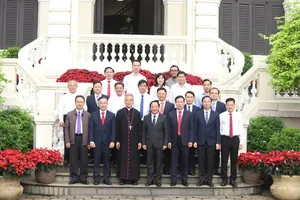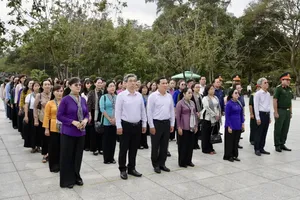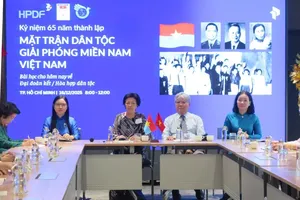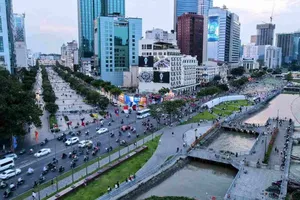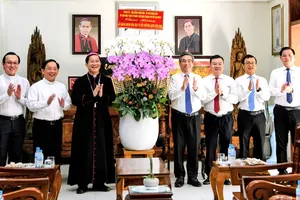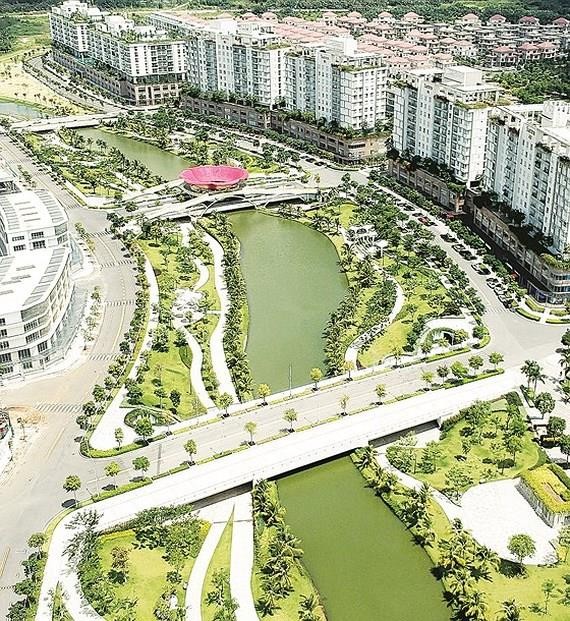
In the afternoon on July 13, Sai Gon Giai Phong Newspaper had an interview with Dr. Xuan about the proposal.
Ms. Xuan told that she has been living in one of much flooded area in the city. Her family has heightened the floor for two times in recent years but rainwater still flowed into their house during heavy rainfalls. Similarly, her neighbors also suffered the same situation, they had to scoop water into all buckets and boxes available in their houses.
Being member of the People’s Council supervision delegation on the progress and efficiency of anti-flooding works in HCMC, Ms. Xuan understand the life of flood affected residents.
HCMC has implemented many anti-flooding measures but the situation has not improved much. For a long time, many people have been thinking that anti-flooding means pushing water out from their houses but forgot that water is an important resource including rainwater which is considered as one of reasons for flooding in HCMC.
Originating from difficulties of residents in flooded areas, from the indigenous rural culture of the country and experiences of some Asian cities, she suggested city leaders to consider installation of rainwater tanks at home besides solutions that have been suggested and implemented in the city.
When it rains heavily, reservoirs could be built to reduce the huge amount of rainwater flowing into the drainage system. Still, amid the current context and condition of HCMC, the problem is where the reservoirs should be built and how much their area is.
Meantime the city has millions of households. If each household has a tank to collect one cubic meter of rainwater, the city can reduce millions of cubic meters of rainwater running into the drainage system. Collected rainwater can be used for watering, washing clothes, cleaning the floor and others.
Replying to the SGGP reporters’ query about expense for the rainwater collection system installation, she said that any anti-flooding measure needs much state budget spending. It will be a huge amount to equip the system for millions of households in the city. So, she expected that the community of businesses and residents will voluntarily join hands in city efforts to tackle flooding by equipping rainwater collection system themselves. The self-equipping should suit each household’s specific circumstance.
In case the city government agree to implement the idea, Ms. Xuan said that they should carefully consider other matters, for instance they should conduct surveys to find reasonable places and positions in houses and apartment buildings to install the rainwater collection system.
Ms. Xuan told that she has been living in one of much flooded area in the city. Her family has heightened the floor for two times in recent years but rainwater still flowed into their house during heavy rainfalls. Similarly, her neighbors also suffered the same situation, they had to scoop water into all buckets and boxes available in their houses.
Being member of the People’s Council supervision delegation on the progress and efficiency of anti-flooding works in HCMC, Ms. Xuan understand the life of flood affected residents.
HCMC has implemented many anti-flooding measures but the situation has not improved much. For a long time, many people have been thinking that anti-flooding means pushing water out from their houses but forgot that water is an important resource including rainwater which is considered as one of reasons for flooding in HCMC.
Originating from difficulties of residents in flooded areas, from the indigenous rural culture of the country and experiences of some Asian cities, she suggested city leaders to consider installation of rainwater tanks at home besides solutions that have been suggested and implemented in the city.
When it rains heavily, reservoirs could be built to reduce the huge amount of rainwater flowing into the drainage system. Still, amid the current context and condition of HCMC, the problem is where the reservoirs should be built and how much their area is.
Meantime the city has millions of households. If each household has a tank to collect one cubic meter of rainwater, the city can reduce millions of cubic meters of rainwater running into the drainage system. Collected rainwater can be used for watering, washing clothes, cleaning the floor and others.
Replying to the SGGP reporters’ query about expense for the rainwater collection system installation, she said that any anti-flooding measure needs much state budget spending. It will be a huge amount to equip the system for millions of households in the city. So, she expected that the community of businesses and residents will voluntarily join hands in city efforts to tackle flooding by equipping rainwater collection system themselves. The self-equipping should suit each household’s specific circumstance.
In case the city government agree to implement the idea, Ms. Xuan said that they should carefully consider other matters, for instance they should conduct surveys to find reasonable places and positions in houses and apartment buildings to install the rainwater collection system.
In addition, they should consider calling on residents to pay for the system installation or using the state budget to partly finance it. In case households build the system themselves, uniformed water tanks might affect urban beauty. These all should be considered carefully and need the community’s consensus.



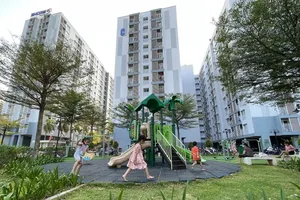

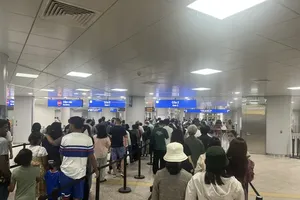
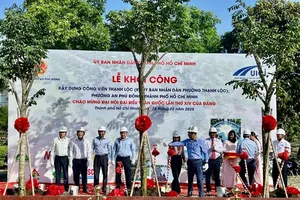

)

